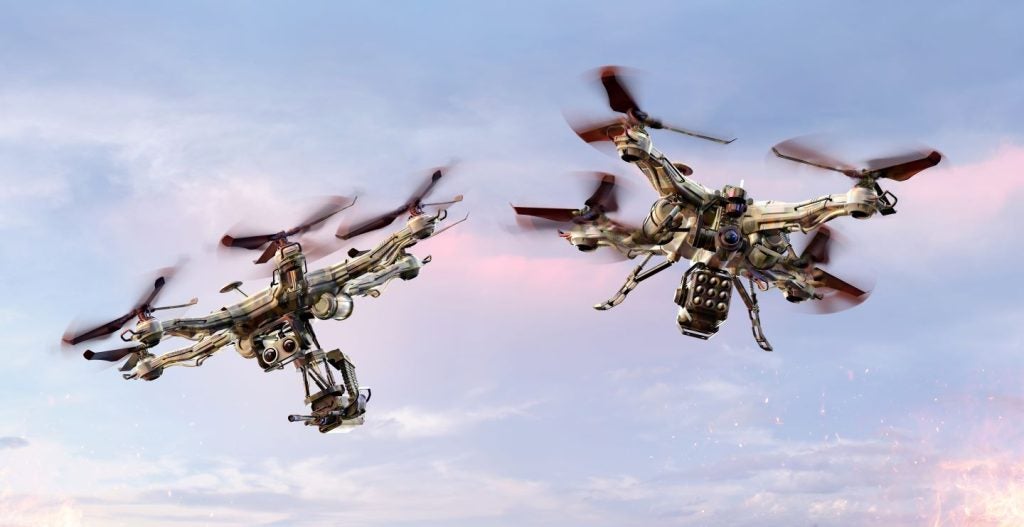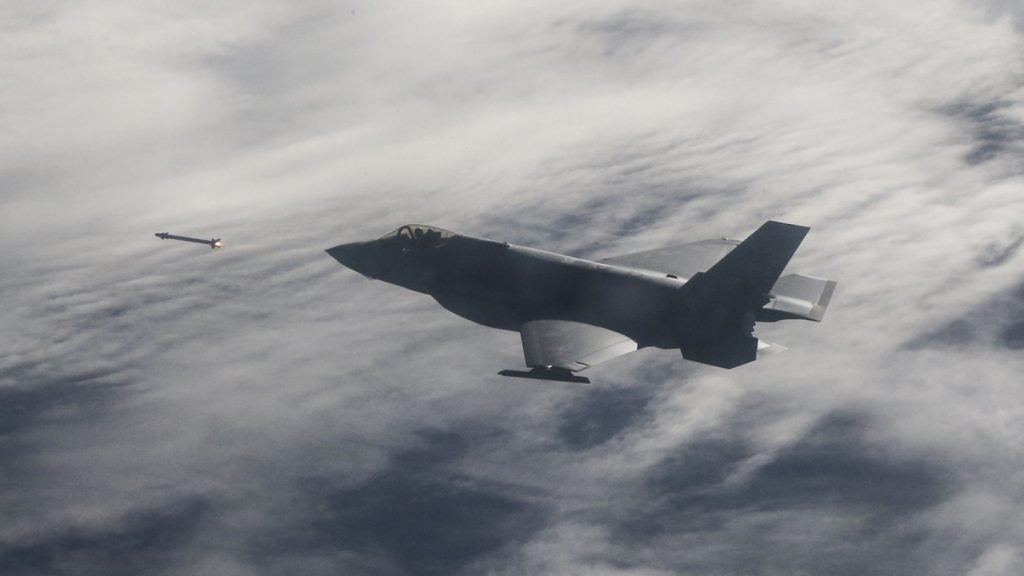The US Defence Advanced Research Projects Agency (DARPA) has moved from concept to contract in 70 days, on a project to provide a plug-in autonomy adaptor for off-the-shelf drones to operate in areas contested by Electronic Warfare (EW).
GlobalData spoke to Dr. Lael Rudd, manager of DARPA’s Rapid Experimental Missionized Autonomy (REMA) programme at the end of the first three-month "spiral challenge", to understand how the development was carried forward so quickly, and whether REMA is writing a procurement recipe for accelerated development that matches the success of private sector big tech companies. “The experiment has different pieces here, and one of the experiments is actually moving at this pace.”
The case for drone autonomy in EW contested environments
Electronic countermeasures against drones are becoming increasingly prevalent, with jamming technology deployed to disrupt communication between operators and drones, causing aborted missions and crashes.
Speaking during a recent Center for Security and International Studies panel discussion, the Chief of the British Army’s General Staff, General Patrick Sanders, stated that Russian successes in using its EW capabilities to counter Ukrainian drones was “during one period, recently” at around 80%, with the losses attributed to the current state of the battlefield’s “extraordinarily contested electromagnetic spectrum” and Russia’s “effective use” of its EW capabilities.
REMA’s approach to evading contest within electromagnetic broadcast frequencies used to control drones is to quit the field; when EW capabilities are employed to disrupt the link between an operator and a drone that has been adjusted with a REMA adapter, the link will drop and the drone will carry on its mission autonomously.
“What the autonomy can do is, if for instance that drone is jammed, and you don't have communications anymore, and you don't have GPS, it will still go around and find targets of interest,” said Rudd, speaking of a mission type where an operator might instruct a drone for reconnaissance purposes. “And that would be done through the autonomy and target recognition, and then it could fly back to the operator and then they could use that information for the targets of interest.”
The only limitation Rudd sees to the duration the drone could operate under autonomous function would be the capability of the battery power of the drone.
Autonomous utility in the kill chain
For decades, DARPA has worked on the frameworks for the ethical, legal and societal implications of whatever it is building to remain human centric, and those are fundamental from the initiation of any project. DARPA is not involved in the development of weapon systems, and the agency will not make a system that has a munition, but Rudd makes a distinction between the model of development for the adapter under DARPA, and how it may be used in the future.
“If there is - when we transition - some sort of . . . service that wants to use the autonomy, they'll have that autonomy,” said Rudd, who went on to describe REMA programme solicitation details for the range of missions the that the adapter is intended to enable through autonomy.
“Continuing with reconnaissance, navigation to waypoints, point-to-point flying through urban terrain, broadcasting objects of interest, . . . this can be integrated into the kill chain, but that's up to the services and the transition for the specific missions that they want to do.”
Defence procurement for drone autonomy at faster-than-Big-Tech speeds
While autonomy in defence technology has seen a range of specific applications introduced recently, the revolutionary innovation coming from REMA is the provision of a single adapter that can be used on any number of different models of drones, allowing a single drone-autonomy adapter to be used in a range of contexts.
“There's really no reason why the government, especially from a technical point of view, can't work at the speed of other commercial companies that are out there. Like, for instance, SpaceX,” said Rudd. “They've worked very, very rapidly. You go fast, you fail, you keep pushing, and so forth. The way I viewed this programme from the start is: 'There's no reason why we can't do this.'”
Following a spiral challenge development process, the 18-month REMA programme has been moving forward in spates of development, experimenting with a flurry of new drone models at each turn. The adapter being used is “backwards compatible” said Rudd, so that with every new spiral of development the adapter picks up capabilities with a range of new drones, but remains functional with all drones that have been considered in the past.
'Rapid prototyping' doesn't describe REMA
The 18 month programme has a number of individual spirals, consisting of perhaps three months of development, with each spiral being marked by the production of a transitionable final product.
This process contrasts with the Agile software development 'sprints' that are popular with big tech companies in the private sector, said Rudd, because sprints are often associated with the incremental introduction of new capabilities.
REMA’s process surpasses that by producing full products at each step, and then providing feedback to the performing companies from a government team to determine what is the next best capability to pursue.
Contract delivery for the drone-autonomy adapter was awarded to Anduril and RTX, while delivery of mission specific autonomy software will come from Leidos, Northrop Grumman, and SoarTech. “All of those are working as a unified team for a unified product, which I think is really unique because we're able to push those together.”
“Failed quickly, and shown that it can fail often."
Dr. Lael Rudd, REMA programme manager at DARPA.
“That allows us also to make sure that we have a single product, and also as we work on each of these spirals, the drone-autonomy adapter is going to be backwards compatible with all of the previous spirals.”
One of the products of the experiment with REMA has been to show how five commercial companies can be brought together to get a singular product, and to show the Department of Defence that this can be done at speed, said Rudd.
Within the 18-month programme, REMA has the support for as long as it is successful, but like commercial ventures its support can be cut at any time if it does not deliver on its promises. Happily, Rudd reported that REMA has been a success at the end of its first spiral, and when it has encountered problems, he says - borrowing an adage from commercial tech companies - it has “failed quickly, and shown that it can fail often,” before finding its solutions.
Additional reporting from Richard Thomas.












